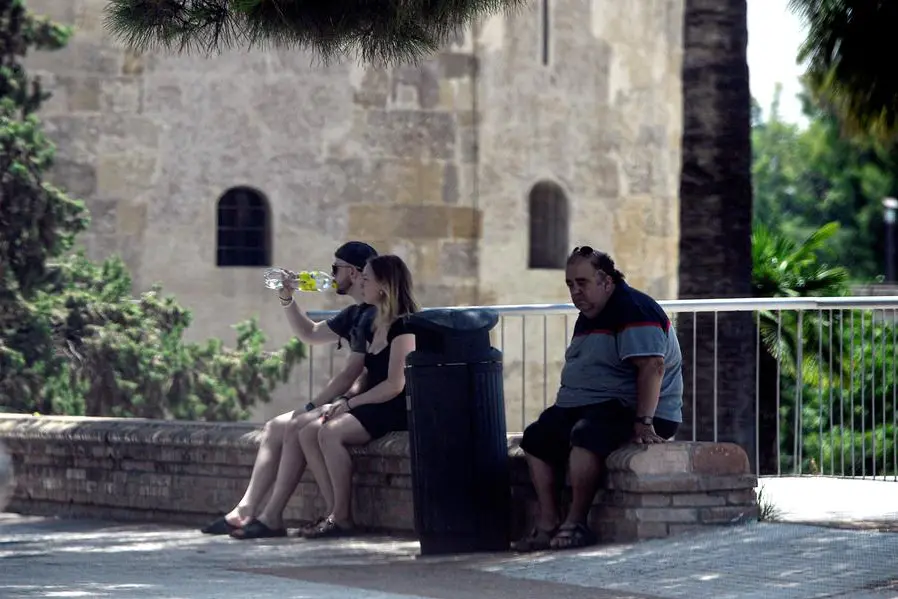PHOTO
Spain issued hot weather red alerts for three regions on Tuesday due to the "extreme" danger posed by scorching temperatures as firefighters made gains in their battle against a blaze raging in the Canary Islands.
Weather agency Aemet said temperatures would hit highs between 38 degrees Celsius (100 Fahrenheit) and 42 degrees across much of the drought-stricken country, sending people to seek shade from a blistering sun.
The heat is expected to be even worse in the eastern regional of Catalonia, Aragon and the Balearic Islands where thermometers could reach 44 degrees Celsius.
The weather office issued a red alert for these three regions, warning the "danger" from the heat would be "extreme".
The authorities recommended that people stay indoors during the hottest part of the day and drink plenty of water.
Lidia Rodriguez, a 27-year-old from the southern city of Seville who was visiting Madrid, said she is used to the heat but the temperatures in the Spanish capital were "suffocating".
"You can't be in the street, it's horrible, horrible, horrible, horrible, horrible," she told AFP in central Madrid.
The interior ministry warned much of the country was facing a "very high" or "extreme" risk of wildfires due to the scorching temperatures, which are affecting most of the Mediterranean.
Some 400 firefighters backed by nine water-dropping aircraft were battling a wildfire raging since Saturday in wooded, hilly terrain on the island of La Palma, one of the eight making up the Canary Islands in the Atlantic.
Cooler overnight temperatures and higher air humidity levels helped firefighters to gain the upper hand in their battle against the blaze, said the Canary Islands' minister for territorial policy, Manuel Miranda.
"I think the evolution of the fire will greatly improve in the coming hours," he told a news conference on Tuesday morning.
The fire has destroyed some 3,500 hectares (8,700 acres) of land, burned around 20 houses and buildings and temporarily forced 4,000 residents to evacuate.
Local authorities urged residents of several towns to remain indoors as much as possible, and use face masks when outside, because of the poor air quality due to the wildfire.
The wildfire comes nearly two years after a three-month volcanic eruption on La Palma caused devastation.
This is the third heatwave to hit Spain this summer. Scientists say heatwaves have become more likely due to climate change.
As global temperatures rise over time, heatwaves are predicted to become more frequent and intense, and their impacts more widespread.
"For the last five to 10 years, every year, it is hotter," said 66-year-old Madrid resident Jose Luis Llamas.
"We have to take action. Every country should take steps to deal with this problem," he added.























